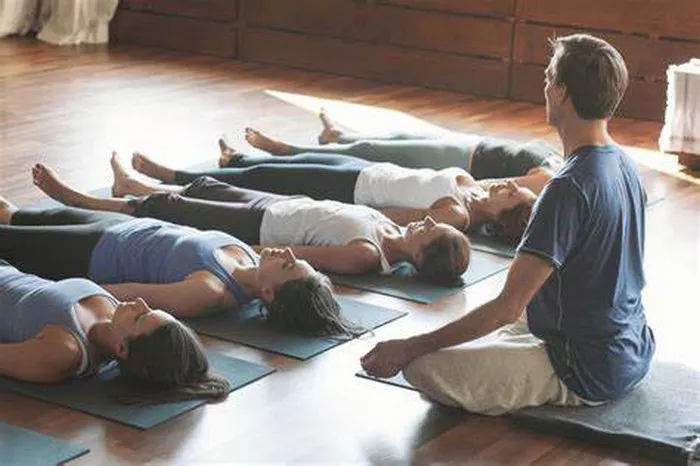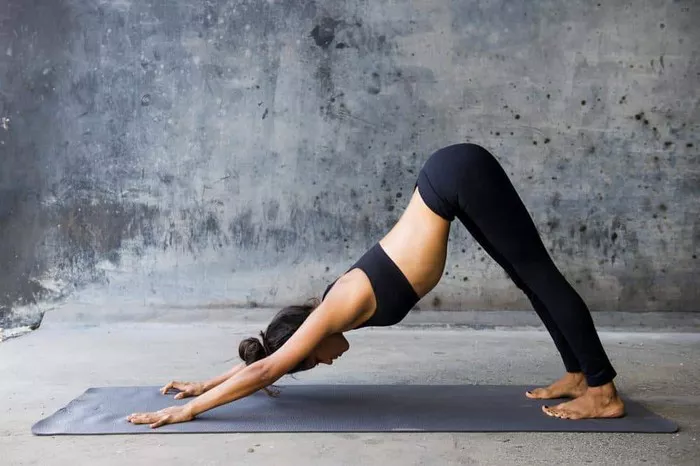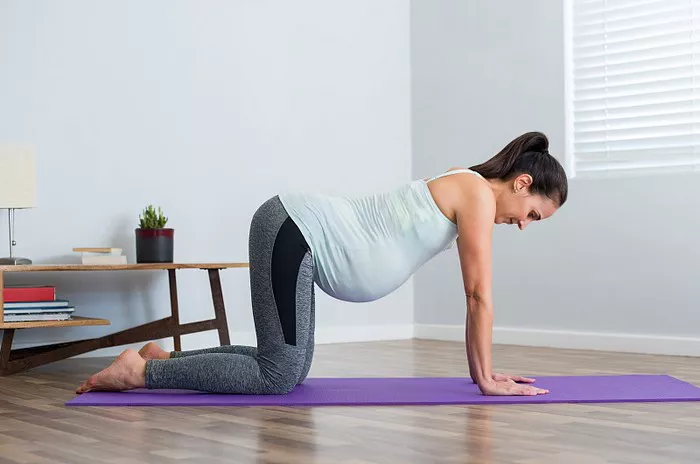Triangle Pose, or Trikonasana, is one of the foundational postures in yoga practice. It is widely known for its benefits, including strengthening and stretching various parts of the body, promoting balance, and increasing flexibility. However, like any yoga posture, it’s important to recognize that it can have its disadvantages, especially if performed incorrectly or if the practitioner has certain limitations or conditions. This article will discuss the potential disadvantages of Triangle Pose, its contraindications, and the considerations that should be made when practicing it to avoid injury and maximize its benefits.
Understanding Triangle Pose (Trikonasana)
Before delving into the disadvantages, it’s important to briefly revisit what Triangle Pose involves. Trikonasana is a standing pose that involves spreading the legs wide, extending one arm down toward the floor (or to a block or other support), and the other arm reaching toward the sky. The torso is angled to one side, creating a triangular shape with the body. This pose works on flexibility, balance, and strength, targeting the legs, hips, spine, and shoulders.
The primary benefits of Triangle Pose include:
- Stretching and lengthening the spine, hamstrings, and groins.
- Strengthening the legs, especially the quadriceps and calves.
- Improving balance and stability.
- Opening the chest and shoulders.
- Stimulating digestion and helping with respiratory function.
While these benefits are highly beneficial to most practitioners, there are certain disadvantages and potential risks associated with Triangle Pose that should not be overlooked.
Common Disadvantages and Risks of Triangle Pose
1. Risk of Straining the Lower Back
One of the most common issues people face when performing Triangle Pose is straining the lower back. When the body is in the extended position, with the torso hinging over the extended leg, the lower back can be forced into an unnatural curve if proper alignment is not maintained. This can lead to discomfort, pain, or even injury, particularly for individuals who have pre-existing back problems or poor posture.
How to avoid this:
- Focus on lengthening the spine rather than collapsing it. Think of reaching the crown of your head toward the ceiling and the tailbone toward the floor.
- Use a block or cushion under your bottom hand to avoid overreaching and forcing your body into an unnatural alignment.
- Avoid sinking into the pelvis and hyperextending the lower back. Keep the abdominal muscles engaged and maintain a neutral spine as much as possible.
2. Excessive Knee Stress
Another potential disadvantage is the strain Triangle Pose can place on the knees, especially for people who have knee injuries or knee instability. The knee of the bent leg in the pose is required to be fully extended and aligned with the foot. If the alignment is incorrect, the knee can experience undue stress, leading to discomfort or injury.
How to avoid this:
- Ensure the knee of the extended leg is tracking in the same direction as the toes, and that the knee is not locked.
- Avoid pushing the knee too far out or inward. If you experience discomfort, adjust your stance by widening your legs or modifying the pose.
- Use a prop such as a block or cushion to relieve some pressure from the knees and support the alignment.
3. Shoulder Tension and Strain
In Triangle Pose, the arms are stretched in opposite directions, which can place a significant amount of strain on the shoulders, particularly for those who already have shoulder issues or limited flexibility in this area. This can result in muscle tension, discomfort, or even injury if the arms are not properly aligned and engaged.
How to avoid this:
- Focus on engaging the muscles of the arms and shoulders while avoiding excessive stretching. The upper arm should not be dropped or forced toward the floor.
- Keep the shoulder blades drawn down the back, avoiding the shoulders from creeping up toward the ears.
- If you have limited shoulder mobility, consider practicing a modified version of Triangle Pose with a reduced arm extension or using props to support your body.
4. Hip or Groin Discomfort
Triangle Pose requires a deep opening of the hips and groins, which can be challenging for individuals who have tightness in these areas. If the hips are not adequately open, attempting to reach the floor or extend the torso forward may cause discomfort or strain in the groin or hip flexors.
How to avoid this:
- Ensure your hips are square to the front of the mat, and the pelvis is not collapsing forward.
- Engage the muscles around the hips to support the stretch rather than relying solely on the flexibility of the muscles and joints.
- If necessary, practice a modified version of the pose with a block under the hand to reduce the intensity of the stretch.
5. Difficulty Maintaining Balance
For some practitioners, especially beginners or those who are less stable on their feet, Triangle Pose can be challenging in terms of balance. The wide-legged stance and the need to rotate the torso while maintaining an open chest can cause instability, leading to wobbles or a feeling of being off-center.
How to avoid this:
- Keep the feet firmly planted on the ground, with a strong connection to the mat. Press through all parts of the feet, including the outer edge.
- Engage the core muscles to help stabilize the torso and maintain the balance in the pose.
- Use a wall or a block for support if you’re having difficulty with balance.
6. Neck Strain and Discomfort
Many practitioners extend the neck to look upward toward the top hand in Triangle Pose, which can lead to neck strain, especially for those with neck problems or stiffness. Holding the head in an extreme position for an extended period can result in discomfort or even muscle tension in the neck.
How to avoid this:
- If you have neck issues or feel discomfort while looking up, consider keeping your gaze straight ahead or down toward the floor instead.
- Avoid forcing the head into an extreme position. Instead, keep the neck aligned with the rest of the spine.
- Use props if necessary to help adjust the alignment of the neck and shoulders.
7. Potential for Overstretching
Since Triangle Pose involves deep stretching, it can lead to overstretching if the practitioner is not mindful of their body’s limits. Overstretching can result in muscle strains, ligament injuries, or even joint instability, particularly in areas like the hamstrings, hips, and lower back.
How to avoid this:
- Always listen to your body and stop if you feel sharp pain or discomfort.
- Use props to reduce the depth of the stretch and avoid pushing yourself too far.
- Practice the pose with awareness and gradual progression over time.
8. Pregnancy and Other Contraindications
For pregnant individuals or those with certain medical conditions (e.g., herniated discs, sacral instability, etc.), Triangle Pose may be contraindicated or need to be adapted. The deep stretching and twisting can place unnecessary stress on the abdomen or the lower back, which could cause discomfort or harm.
How to avoid this:
- Consult with a healthcare provider before attempting Triangle Pose if you are pregnant or have any medical conditions.
- Modify the pose as needed, for example, by widening the legs and using support for the hands.
- Avoid deep twists or excessive backbends that could aggravate certain conditions.
Modifications and Alternatives to Triangle Pose
For those who may find the traditional Triangle Pose too challenging or uncomfortable, there are several modifications and alternative poses that can provide similar benefits with reduced risk:
- Wide-Legged Forward Bend (Prasarita Padottanasana): This modification involves standing with the legs wide apart and bending forward to stretch the hamstrings and groin, without requiring the deep torso twist or side bend of the Triangle Pose.
- Reverse Triangle Pose (Viparita Trikonasana): In this variation, the top arm reaches down toward the ground instead of the bottom arm, offering a different angle of stretch and a reduced demand on the shoulders.
- Using Props: Placing a block under the bottom hand or using a bolster for support can help reduce the depth of the stretch and provide stability.
- Supported Triangle Pose: For those with balance issues, performing Triangle Pose with the back against a wall or using props to assist with alignment can make the pose more accessible.
Conclusion
Triangle Pose, while a highly beneficial and powerful posture in yoga, does come with certain disadvantages and risks. These can include strain on the lower back, knee, shoulders, and hips, difficulty with balance, neck discomfort, and potential overstretching. However, with proper alignment, modifications, and awareness of individual limitations, many of these disadvantages can be minimized. Practitioners should always listen to their bodies, avoid pushing beyond their range of motion, and use props as needed. By practicing with mindfulness and caution, the benefits of Triangle Pose can be fully enjoyed while avoiding the risks associated with it.
For those with medical conditions or significant physical limitations, it’s always advisable to consult a healthcare provider or an experienced yoga instructor to receive personalized guidance and modifications.
Related Topics:





















